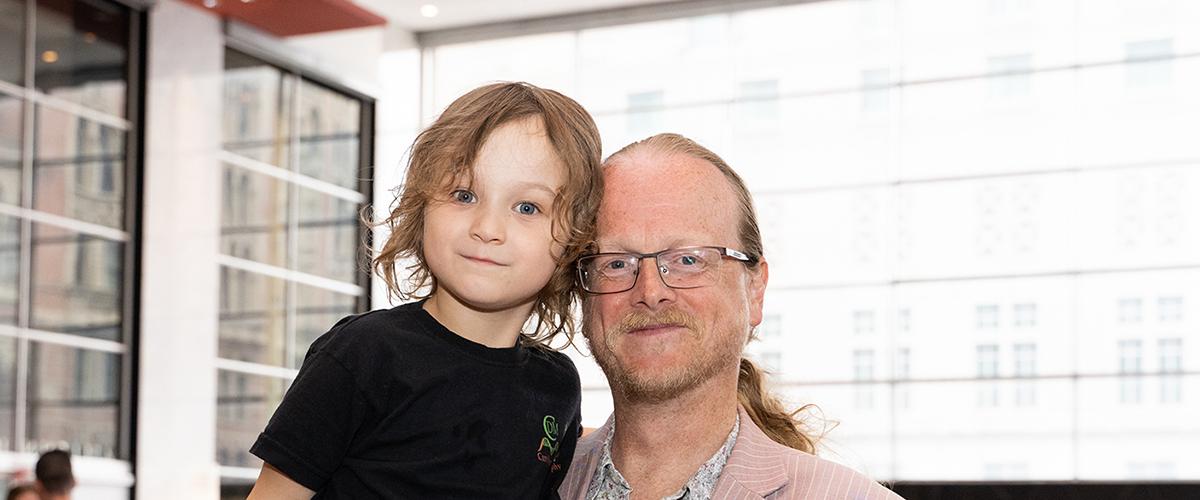First Grant in $1M DM Cure Development Project Awarded
MDF community members likely remember that in late 2017 very generous donors committed $1M to MDF to launch a gene editing development project to find a cure for myotonic dystrophy. MDF conducted a comprehensive scoping and discovery workshop, followed by a Request for Applications in mid-2018. We are delighted to announce that Dr. Vincent Dion was awarded the first grant for that project.
Dr. Dion's Approach
Dr. Dion was trying to understand why the size of the repeating piece of genetic code in the gene that causes myotonic dystrophy varied from cell to cell in patients with the condition and in so doing, he may have stumbled on a novel treatment for the disease.
MDF has awarded Dion a two-year grant totaling $250,000 to support his research to determine the feasibility of a gene editing treatment for DM. He will be helped by Drs. Geneviève Gourdon at the Imagine Institute in Paris, and Jack Puymirat at Université Laval.
Myotonic dystrophy is known as a trinucleotide repeat disorder because of an expanded repeat of a three-letter piece of genetic code CTG (cytosine, thymine, and guanine) found in the DMPK gene of people with DM1. It’s normal to have several repeats of this code in the DMPK gene, but people who have more than 50 repeats, can develop DM1. The greater the number of repeats, the more severe the disease tends to be.
A Surprising Finding
Dion, a professor at the UK Dementia Research Institute at Cardiff University, knew that the size of repeats in any person with the disease could vary greatly from cell to cell. He wanted to understand why. He was using the gene editing technology CRISPR-Cas9, a bacterial enzyme that allows users to make precisely-targeted cuts in genetic material, to see if he could test a theory that changes in the number of repeats was caused by DNA damage. He wanted to see if disrupting the repeat track by making cuts in a single track of the double-stranded genetic code to expose the repeat would influence whether expansion of the repeat occurred.
In a surprising finding, Dion observed that by making such breaks in the repeat track he had corrected the error. Enzymes that naturally repair damaged DNA healed the cuts to the repeat track. But instead of amplifying the repeat, it reduced its size.
In essence, his work suggested gene editing might prove to be a way to correct the toxic repeat and possibly arrest the mechanism of the disease.
“We stumbled upon this by chance,” said Dion, who earned his Ph.D. in molecular biology at Baylor College of Medicine in Houston and then completed a postdoctoral fellowship at the Friedrich Miescher Institute in Basel. “The question we were asking was completely different and we ended up using CRISPR to correct the mutation in human cells, and then we went from there.”
Accelerating Research with MDF
The MDF grant will allow Dion to continue his work, exploring the gene editing approach in a DM mouse model to see if it corrects the mutation.
The grant will also be used to see how precise the approach will be within a living organism and to make sure that the CRISPR cuts the expanded repeat in the DMPK gene as intended, and not elsewhere, which could lead to severe off-target effects.
Dion does have some tricks to ensure the CRISPR targets the genetic material correctly at the desired point. He uses RNA to target the repeat track he wants it to cut. That’s not without its challenges, as he needs to package the CRISPR and RNA into a viral vector to carry it into the cell.
The other issue any gene editing therapy will face is the need to deliver it into the central nervous system (the brain) to address the neurological effects of the condition. That would likely require some means of direct delivery. In the mouse model, Dion will be injecting directly into the brain. If all of that works, Dion then hopes to move the gene editing work to a larger DM animal model.
For now, Dion hopes to demonstrate that the approach works. Even if he is successful with the experiments he'll be conducting over the next two years, he believes it would still be several years before the approach could advance to human testing.
“The hope is that we'll know whether it works. We'll know whether it's specific enough for the repeat track and whether it might cause other mutations,” said Dion. “If those questions are answered successfully, then I think we're looking at another five years or so after that to do a clinical trial.”

